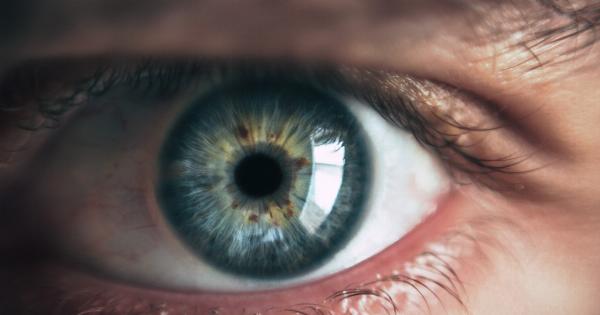Blurred vision is a common vision problem that can affect people of all ages. It can occur suddenly or gradually and may be temporary or persistent.
There are several possible causes for blurred vision, ranging from minor issues to more serious underlying conditions. Identifying the root cause is crucial for proper treatment and management. In this article, we will explore six possible culprits behind blurred vision.
1. Refractive Errors
Refractive errors are the most common cause of blurred vision. These errors occur when the shape of the eye prevents light from focusing directly on the retina. The three main types of refractive errors are:.
- Nearsightedness (myopia): Objects in the distance appear blurry.
- Farsightedness (hyperopia): Nearby objects appear blurry.
- Astigmatism: Blurred vision at all distances due to irregular cornea or lens shape.
If you have a refractive error, wearing prescription glasses or contact lenses can help to correct your vision and eliminate blurriness.
2. Dry Eyes
Dry eyes occur when your eyes do not produce enough tears or produce poor-quality tears. This can result in discomfort, redness, and blurred vision. The lack of moisture on the eye surface can cause the vision to become hazy or unfocused.
Using lubricating eye drops or artificial tears can help alleviate the symptoms and improve vision clarity.
3. Eye Fatigue and Eye Strain
Prolonged use of digital devices, reading for extended periods, or engaging in activities that require intense visual concentration can lead to eye fatigue and strain.
When your eyes become fatigued, you may experience blurred vision, headaches, and difficulty focusing. Taking regular breaks, using proper lighting, and practicing eye exercises can help prevent eye strain and reduce the occurrence of blurred vision.
4. Cataracts
Cataracts are a common eye condition that primarily affects older adults. They occur when the natural lens of the eye becomes cloudy, leading to blurred vision.
Other symptoms of cataracts include sensitivity to light, difficulty seeing at night, and faded colors. Cataract surgery, a common and highly successful procedure, involves replacing the cloudy lens with an artificial one.
5. Eye Infections
Eye infections, such as conjunctivitis (pink eye), can cause redness, itchiness, and blurred vision. Bacterial or viral infections can lead to inflammation in the eyes and affect the clarity of vision.
Proper hygiene, avoiding sharing personal items, and promptly seeking medical treatment can help prevent and manage eye infections.
6. Chronic Health Conditions
Blurred vision can be a symptom of various chronic health conditions, including diabetes and hypertension. High blood sugar levels in diabetes can damage the blood vessels in the eyes, leading to diabetic retinopathy and vision problems.
Similarly, hypertension can also affect the blood vessels in the eyes and cause blurry vision. Proper management of these conditions, including regular check-ups and medication, is essential to preserve vision.
Conclusion
Blurred vision can occur due to various reasons, ranging from benign causes like refractive errors and eye fatigue to more serious conditions like cataracts and chronic health conditions.
It is important to identify the root cause of blurred vision to determine the appropriate treatment and management plan. If you experience persistent or sudden blurred vision, it is recommended to consult an eye care professional for a comprehensive eye examination.






























